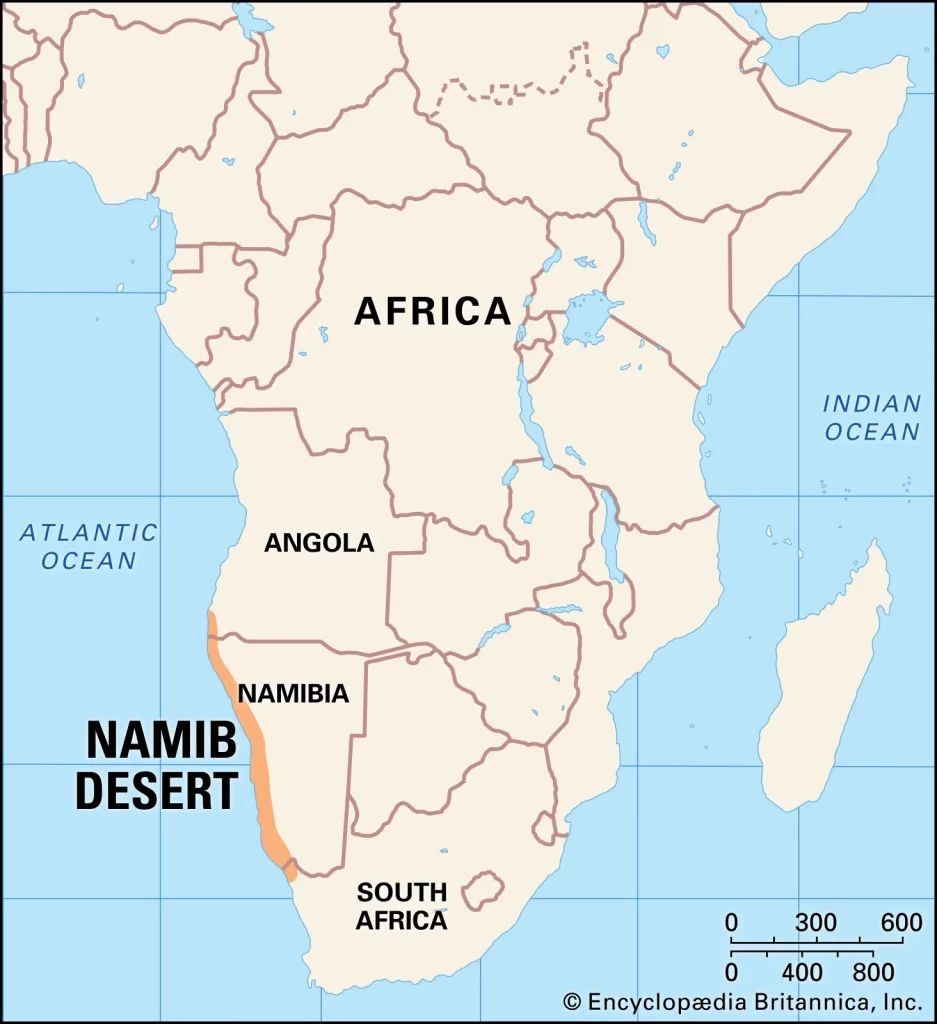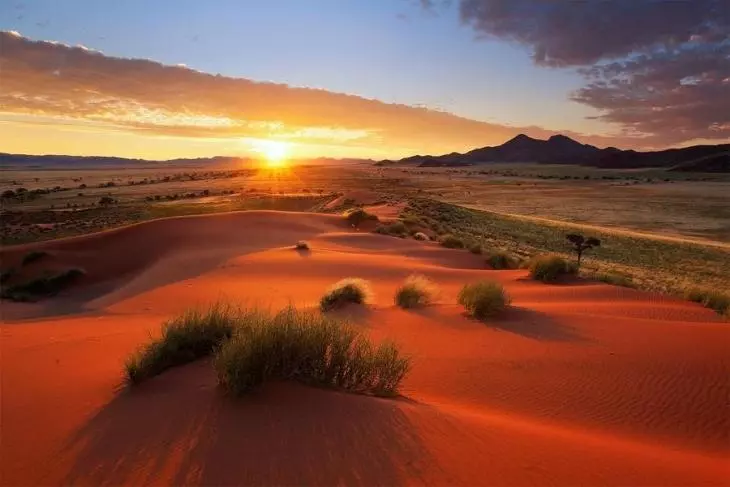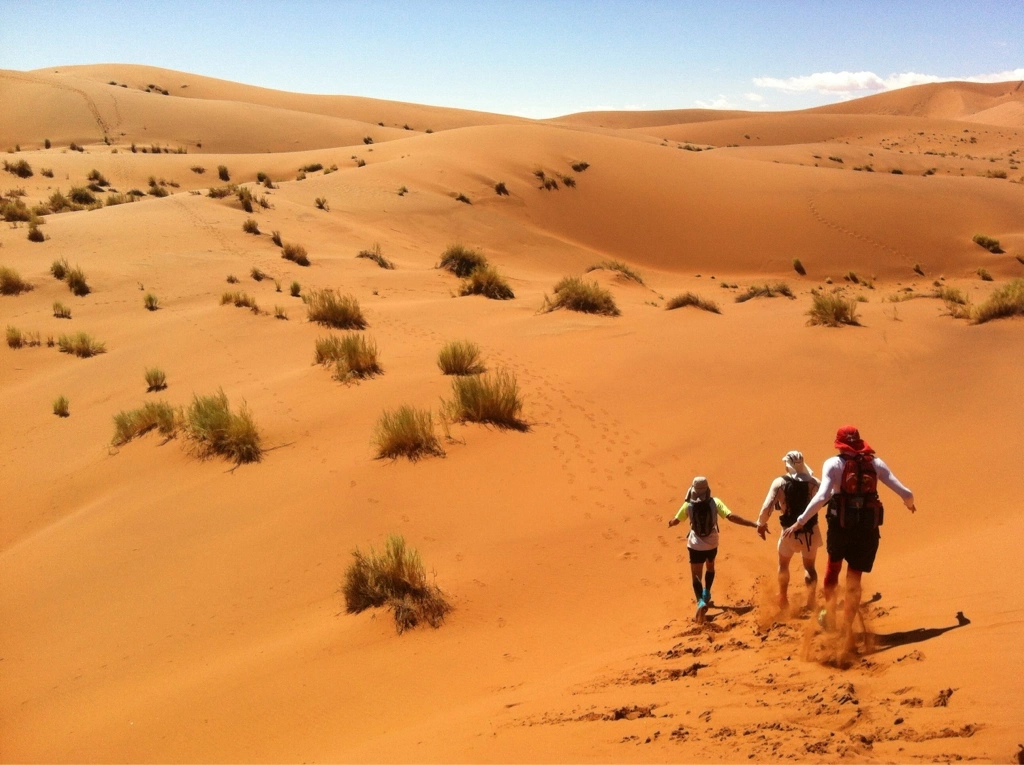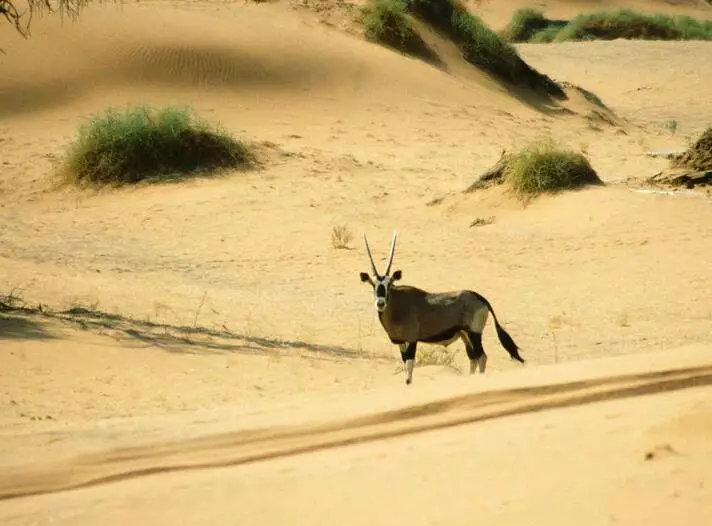The Namib Desert is among the largest deserts in the world. It is the oldest desert as well because it has been in existence for 55million years. The word “Namib” means a vast place.
Namib desert is located along the western coast of Southern Africa in Namibia and South Africa. The desert is not inhabited save for a few scattered towns around the area. However, there are animals like lions, rhinos and elephants that are uniquely adapted to the harsh climate in the area.

One of the interesting facts about Namib Desert is the strange climate. It’s also important to note that the desert has a skeleton coast in the area, very big sand dunes, welwitschia plants that can live up to 2,000 years and an abandoned town that stands in the sand.
How Big Is The Namib Desert?
It covers 2,000 kilometers (1200 miles) along the Atlantic Ocean Coasts of Namibia, South Africa and Angola. The Namib is approximately 80,000 square kilometers (30,888 square miles) in size.
The northern part of Namib, also known as Mocamedes Desert, extends 450 kilometers (279 miles) in the Angola-Namibia border. The Namib stretches southwards towards the Kalahari Desert. Namib Desert is elevated 200 kilometers east of the Atlantic and stretches inland to the Great Escarpment.
Is Namib A Hot Or Cold Desert?
The Namib Desert generally is very cold with temperatures varying from 9 to 20℃ in all seasons. Fog is common in Namib due to the cold air that rises from the Atlantic Ocean.
The desert receives approximately 1cm of rain annually. You can rarely get plants in the region due to extremely harsh weather conditions. But there are some parts of the Namib Desert that experience rainfall though in small quantities in the months of December to February.
There are freezing temperatures at night and 45℃ during the day.
How Hot Does It Get In The Namib Desert?
In January and February the temperature is a bit hot and the temperatures range from 30-35℃ (86-95⸰F). It’s usually clear in the mornings with downpours during the afternoons. In March and April the temperatures are usually 25 – 30℃ (77 – 86 during the day. There is no rainfall at this time of the year and the temperatures begin to drop at night.

The hot season commences from the month of May through to October. During this time there is minimal rainfall. It’s usually hot during the day and cold at night.
Temperatures start to rise in November, with temperatures rising above 30 ℃ in the areas around the desert and hotter in the desert. The rains start falling in December and during this time the temperatures start to drop changing the landscape in Namib.
Can Tourists Visit The Kalahari Desert?
The people that live around the Namib Desert area are very friendly. This makes the idea of visiting the area so intriguing. You can climb the largest sand dunes of around 300 meters high during your visit to the desert. The Namib Desert has three national parks. They are: Skeleton Coast National Park, Namib-Naukluft National Park, and the Sperrgebiet National Park–although this particular park, tourists are not allowed to visit.

You can explore the Sossusvlei which is a basin, a dry area that once used to be a river during heavy rainy seasons. The cracked clay on the floor of the basin and the acacia trees mark the path where water used to flow. There are also huge sand dunes in the area. Deadvlei is also one of the amazing places that you can visit. The place has a big area of white clay with dead black trees. You can also see huge sand dunes on the sides of the Deadvlei.
The Namibrand Nature Reserve is another breath-taking area where you can relax during your visit to the Namib. This is a calm place with attractive plains and mountains. Zebras, ostriches and oryx are also found in this area. You can also visit the Sandwich Harbor where you can see the yellow sand dunes. It’s at this point that the desert connects to the sea. The Kolmanskop Ghost Town is another alluring place to visit. This is an old town where mining diamonds was done. The town was abandoned in 1959 by the miners after depleting the diamonds. The town is slowly being swallowed by the sand dunes.
The Skeleton coast is also an amazing place to visit. The people in the area believe that God made this land with anger because of its rough waters. You cannot access the shores of this coast. There is also thick fog covering the area. There are shipwrecks scattered on the Skeleton Coast which have historical information on the activities that used to take place in the area. Some of them are in good condition while others are buried in the sea and the sand. The Cape Cross is an area in the Skeleton Coast National Park. It’s fascinating to see the seals around 100,000 in number, some on sand and others in the water.
You can also fly over the Namib Desert to get a clearer view of the desert and sand dunes.
What Else is Located In This Area?

There are desert animals that live in the Namib Desert. These include the oryx, a large antelope that has adapted to this harsh climate. The oryx can retain water in its body for a longer period and its light skin protects it from the desert heat. You can also see the desert elephant in the area. This elephant has a leaner body and larger feet that enable it to walk in the desert sand. It also has larger legs that help it to live for three days without water.
The Namaqua chameleon, the fog beetle, cheetah, round-eared elephant shrew and the dik-dik are among the animals that you can come across during your visit to the Namib Desert. In a nutshell, the Namib Desert is a delightful place to visit. The best time to visit is the months of April to May and September to October, when the weather is friendly.
